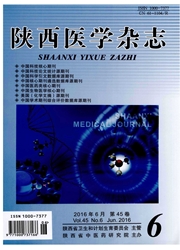

 中文摘要:
中文摘要:
目的:以咬肌(Masseter muscle,MM)为对照,研究牙尖交错位最大紧咬过程中咬合力和胸锁乳突肌(Sternocleidomastoid muscle,SCM)肌电之间的关系。方法:采用T-scanIII咬合记录仪和BioEMG III肌电图仪,同步记录25名健康受试者SCM和MM的肌电值,分析不同咬合力水平下肌电值与自主最大紧咬(Maximal voluntary clenching,MVC)时肌电值的比值的变化。结果:MVC时,咬合力、SCM及MM肌电值双侧之间无明显差异,SCM肌电幅值约为MM的(9.13±4.77)%-(10.23±6.47)%,SCM及MM的肌电比值在达到最大咬合力的75%之前均呈逐渐增高趋势,但从该水平至MVC时均显著下降(P〈0.05)。结论:在自主最大紧咬过程中SCM表现出与MM同步的先升高后降低的肌电变化规律。
 英文摘要:
英文摘要:
Objective :To investigate the relationship between occlusal force level and the surface electro‐myography(SEMG) activity of sternocleidomastoid muscle (SCM )versus masseter muscle(MM ) during maximal voluntary clenching (MVC) in intercuspal position(ICP) .Methods :T‐Scan III system and BioEMG III system were used to record SEMG activity of the SCM and of the MM simultaneously .Recordings which were obtained from 25 healthy young adult during MVC were analyzed in different occlusal force levels .Normalized SEMG value was ratio of SEMG values of different occlusal force levels to MVC .Results :There was no difference between bite force , SEMG value of left side and right side in ICP‐MVC .Ratios of sternocleidomastoid(SCM ) to masseter muscle activity range from (9 .13 ± 4 .77)% to(10 .23 ± 6 .47)% .In normalized SEMG value of the MM and SCM ,which increased before 75% ‐MVC ,and decreased after 75% ‐ICP(P〈 0 .05) .Conclusion :The results confirmed that a lower SEMG activity of SCM is similar to MM when the highest level of bite force achieved during MVC in ICP .
 同期刊论文项目
同期刊论文项目
 同项目期刊论文
同项目期刊论文
 期刊信息
期刊信息
